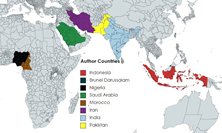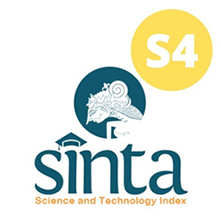PID Temperature Control of Baby Incubator Transport Battery Efficiency
Abstract
Transport baby incubators are used to keep babies warm and safe while in transport using battery voltage sources or DC electricity, which are portable and can be used without getting a supply of electrical energy. The problem that often occurs with this tool is the limited battery power system. causes a risk to the infant in the event of power failure or battery exhaustion. We aim to evaluate the battery efficiency of Baby Incubator Transport using a PID temperature controller. The evaluation is done by comparing and analyzing the battery voltage of the device to the standard device, as well as considering the setting temperature and duration of use of the device so that it can provide convenience in evacuating babies in an emergency. The tool uses the PID method to control temperature and maximize battery power. In this design, researchers only look at the efficiency of the PID method on temperature control and the battery to be used. This module will have a display that will display the battery voltage value, battery voltage percentage, skin temperature, chamber temperature, humidity, and temperature control that has been selected in the form of a graph. Compared with the digital multimeter measuring instrument. From the results of data collection, it can be concluded that the PID method has a faster rise time to reach the setting temperature, while the fuzzy method has a longer rise time to reach the setting temperature. However, the PID method requires more battery power than the Fuzzy method. The measurement results between the display and the measuring device have a difference of 3.1% at 34°C, at 35°C it is 3.9%, and at 36°C it is 4.7%. The biggest error is at a temperature of 36ºC, the smallest is at a temperature of 34ºC. Based on the results of the observation analysis of battery power consumption, it is found that the smaller the battery energy, the smaller the current issued, as well as the voltage issued. But if the load is large, the current is inversely proportional to the center, the battery voltage decreases while the current increases.

This work is licensed under a Creative Commons Attribution-ShareAlike 4.0 International License.
Authors who publish with this journal agree to the following terms:
- Authors retain copyright and grant the journal right of first publication with the work simultaneously licensed under a Creative Commons Attribution License that allows others to share the work with an acknowledgement of the work's authorship and initial publication in this journal.
- Authors are able to enter into separate, additional contractual arrangements for the non-exclusive distribution of the journal's published version of the work (e.g., post it to an institutional repository or publish it in a book), with an acknowledgement of its initial publication in this journal.
- Authors are permitted and encouraged to post their work online (e.g., in institutional repositories or on their website) prior to and during the submission process, as it can lead to productive exchanges, as well as earlier and greater citation of published work (See The Effect of Open Access).











